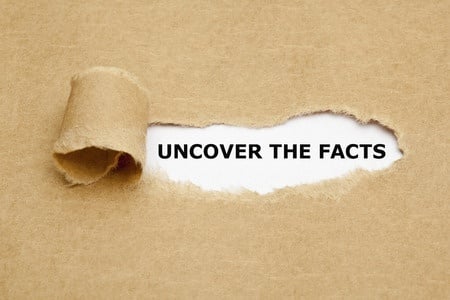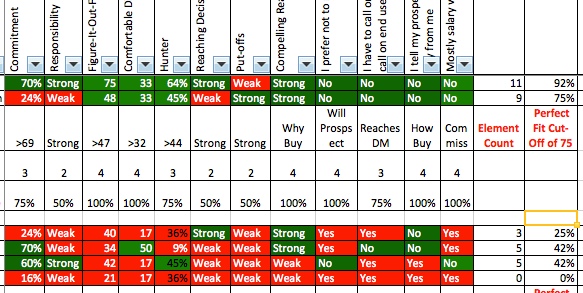- March 16, 2015
- Posted by: Dave Kurlan
- Category: Understanding the Sales Force

You feel very confident when you buy from a company that is the best in their industry and has achieved a long track record of success by consistently delivering great results. Your company could be one of those great companies, but it’s more likely that yours is a company that must repeatedly prove itself.
New salespeople have even greater challenges when they sell products and services that must be proven. Do they have to prove that they’re better, quicker, smarter, cooler or easier? Do they have to prove that their ROI is better? Do they have to prove a new technology or concept? Do they have a powerful, consistent way to do that?
There’s something even more powerful than the actual proof of concept and that is whether or not it is timed correctly. Do new salespeople attempt to prove something before an opportunity has been thoroughly qualified? Our statistics show that your proof of concept may not be at fault when a deal doesn’t close. Oh no. It’s more likely that your salespeople failed to thoroughly qualify the opportunity first; and as a result, a great deal of time, resources and energy were wasted on a prospect that couldn’t or wouldn’t buy even if the proof of concept was top notch. Other times, salespeople forge ahead with the proof of concept without an up-front agreement that, if successful, the prospect will buy!
Now stay with me on this…a quick example and then back to you…
Objective Management Group (OMG) is one of those companies too. It doesn’t seem to matter how many years we’ve been doing this (25), how much success we’ve had (tons), how many companies use us (10,000+), how many industries we help (all of them), how many awards we have won (#1 sales assessment for 4 consecutive years), how accurate and predictive it is (75% of the candidates we don’t recommend who somehow get hired anyway fail within 6 months), how strong our predictive validity is (highest in the industry), or how strong our science is (more research behind this than Neil Rackham has done on salespeople). Because we are a relatively small company, executives still want us to “Prove it!” They say things like, “Well, it might work in medical devices, but that doesn’t mean it will work for _____.” Or, “It might work for SaaS, but that doesn’t mean a thing when it comes to _______. Our business is different!”
Sometimes, we must prove it by assessing a company’s top and bottom salespeople just to show how accurately we can differentiate between them. It usually ends up looking something like the images below where you clealy can see the green representing specific findings that most of the top performers possess, versus a sea of red, showing that most of the bottom performers do not possess those same findings and scores:

In the image above, this compay’s top 3 salespeople had 81%, 94% and 81% of the specific findings we identified that differentiate their top salespeople from their bottoms. Their bottoms had only 25%, 38% and 63% of those findings and/or scores. Over and above our standard level of customization, we can identify a candidate that is a Perfect Fit for their company when the candidate meets or exceeds 81% on our Perfect Fit Index.

The second example is from a smaller company that had only 2 top performers and 4 bottom dwellers. Their top reps had 92% and 75% of the specific findings and/or scores that differentiated them from their bottom dwelling colleauges, who had only 25%, 42%, 42% and 0. While there is less data to work with at this company, we still managed to identify 12 findings and scores that clearly differentiated their tops from their bottoms as seen by looking at the all of the green on top and the sea of red on the bottom.

The last example represents 6 top performers that were all hired during the course of the previous year using our standard customization. We used this analysis to further refine our findings and/or scores that would allow us to identify candidates that were a Perfect Fit for them. While we found 16 scores/findings that their top performers shared, without comparing them to bottom performers we cannot be sure that these findings differentiate their top performers from bottom performers.
Most companies don’t need this level of proof. A sample, along with our reputation for accuracy, testimonials, and the sales-specific information that we provide are usually more than enough to convince them that we could only improve on their hit or miss (emphasis on miss) track record at sales recruiting and selection.
So how can you build and deliver proof of concept? What are the various ways that you can proove to a prospect that what you do works as promised, works better than your competition, works equally well for less total cost of ownership, or returns greater value than the rest of the field?
Prospects like seeing validated data. Prospects love talking with customers who faced similar challenges, who are from the same industry or vertical, who are in the same size company, or who bought the same solution. Will your proof of concept include a demo, trial, test, pilot, tour, samples, or something else? The key is, what will convince the prospect you have today? Many salespeople fail to ask what will work and assume that providing the same proof that they provide to everyone else will get the job done. But that’s like fitting a square peg into a round hole – it never works. Ask, clarify, agree to a timeline, define success, and gain commitment to move forward upon completion of a successful proof of concept.
Proof can be difficult. When it comes to winning a deal using proof of concept, the key is to have proof that differentiates you from your competition, validates your claims and promises, and exceeds a prospect’s skeptical expectations.
Would you like to give OMG’s legendary Sales Candidate Assessment a test drive?
